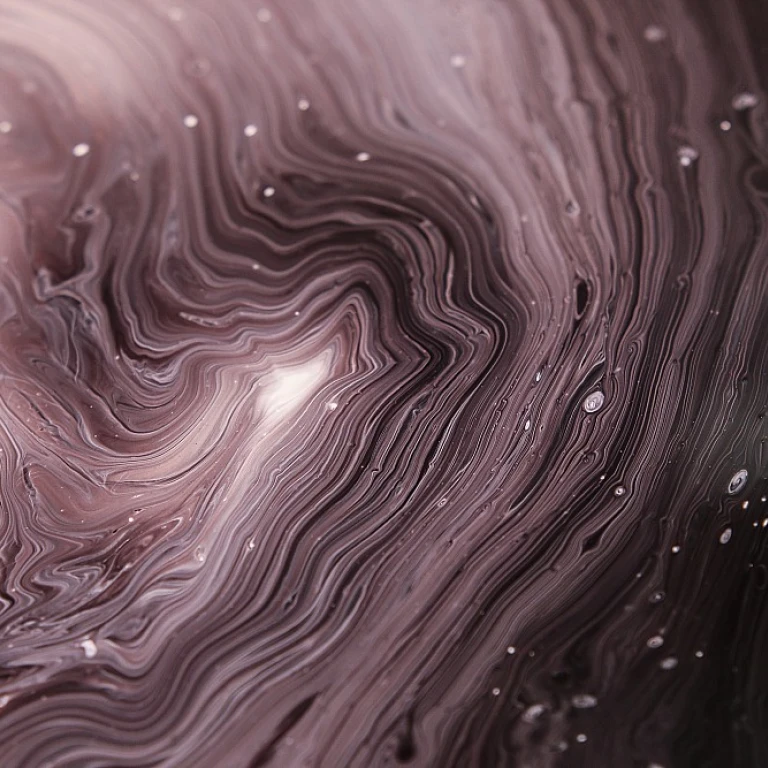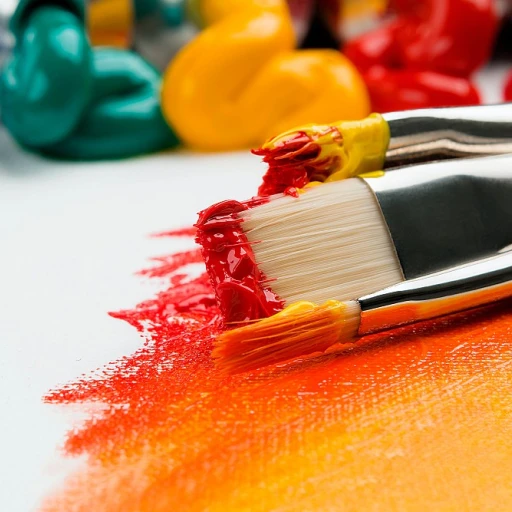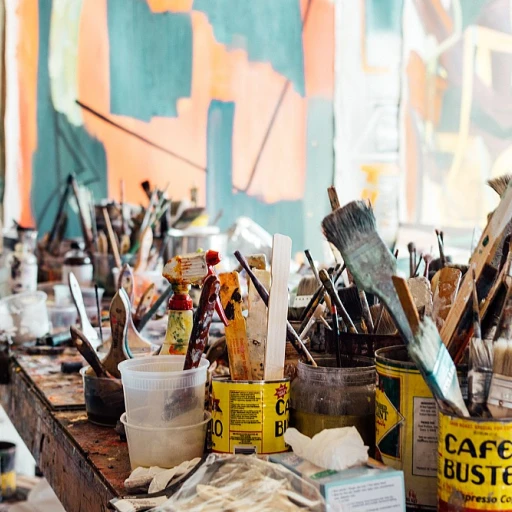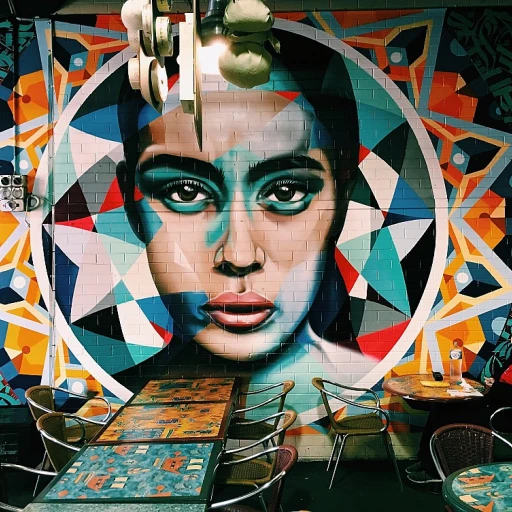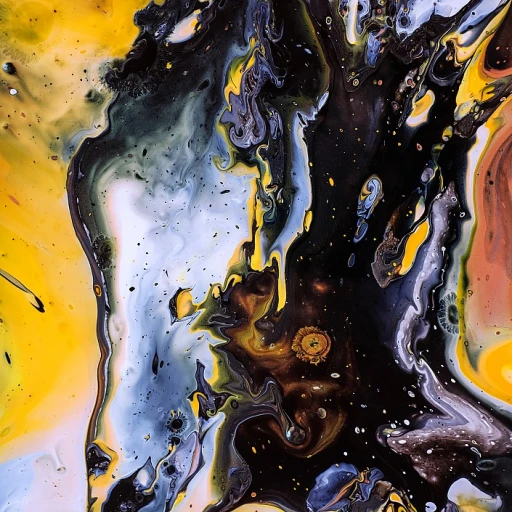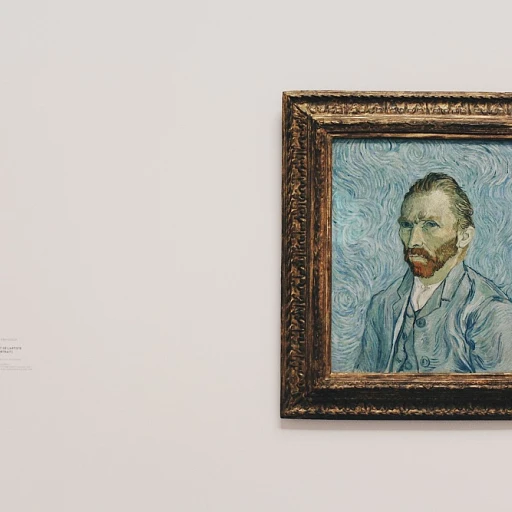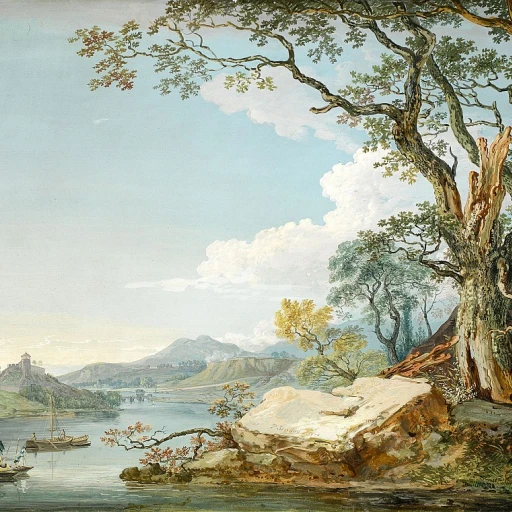-teaser.webp)
The Historical Significance of Floral Motifs
Exploring the Rich Legacy of Botanical Art
Floral motifs have been a mainstay of artistic expression for centuries, embodying a unique blend of nature and creativity that continues to captivate art enthusiasts today. From opulent roses to fragile white lilies, the depiction of flowers in art has transcended cultural and historical boundaries, showcasing the diverse beauty of flora through the course of history.
Early examples of vintage floral oil paintings often served both decorative and symbolic purposes. These artworks not only embellished grand estates and fine art collections but also represented the prosperity and social status of their owners. The size and detail of these paintings often reflected their intended settings, be it an intimate corner or a sprawling gallery wall.
The significance of floral art is underscored by its recurrence in various art movements, from the classic elegance of still life oil paintings to the impressionistic flair of renowned artists. This historical tapestry of floral art offers a window into the cultural and artistic zeitgeist of bygone eras, allowing us to appreciate not only the art itself but the botanical subjects that inspired them.
Understanding the historical context of floral painting is essential for art collectors and enthusiasts who are keen on acquiring genuine pieces. The provenance of a work can significantly affect its value, as discussed elsewhere in our exploration of authenticity and value assessment for vintage floral art.
Artistic Techniques in Vintage Floral Oil Paintings
Brush Strokes and Floral Dynamics
When we delve into the techniques used in vintage floral oil paintings, it's essential to appreciate the meticulous craftsmanship and artistic flair unique to each masterpiece. The oil medium, cherished for its vibrant and enduring qualities, allows artists to capture the delicate beauty of flowers in full bloom. These paintings showcase the elegance of life, as seen through the expert blending of hues and shades.
The vintage floral art genre often incorporates classical techniques with an emphasis on the play of light and shadow. Much like antique French paintings, these works use layered brush strokes to evoke the textured essence of petals and leaves. Techniques such as glazing—a method of applying thin layers of paint to create a luminous effect—highlight the richness of color, bringing to life roses, lilies, and an array of flowers with stunning realism on canvas.
Frames also play a crucial role in enhancing vintage floral paintings, complementing the elaborate motifs and adding to the overall allure as wall art. Paintings housed in ornate or classic frames often carry a higher vintage value, creating a focal point in any decor setup.
A floral painting's size and composition are thoughtfully considered by artists, balancing elements to allow each flower to play a part in the bouquet of colors and forms. This careful curation elevates the painting from simple decor to a piece of fine art.
In contemporary settings, the artistic techniques used in these paintings continue to resonate, embodying a timeless charm that adds depth to modern interiors. When one views a Claude Monet-inspired floral painting, for instance, the delicate interplay of colors and brushwork can transform a simple wall into a vibrant tapestry of art.
For those seeking to invest in vintage oil paintings, understanding these artistic techniques not only aids in appreciating their aesthetic value but also in evaluating the piece’s quality and authenticity. Knowing that floral oil paintings are masterpieces in their own right, an effective way to begin appreciating their complex beauty is to explore resources like The Allure of Canvas Flags in Luxury Art where similar artistic methodologies are explored. Keeping these principles in mind will certainly enhance the value of acquiring such timeless decorative pieces.”}
The Role of Vintage Floral Art in Modern Decor
The Modern-Day Impact of Timeless Floral Beauty
Floral art has always been synonymous with elegance and sophistication, continuing to flourish as a centerpiece in modern decor. These vintage floral oil paintings, with their delicate depiction of flowers like roses and the intricacies of their petals, provide not just an aesthetic delight but a window into the life of a bygone era. The versatility of these art paintings means they blend seamlessly with various decor styles, from classical to contemporary. Indeed, vintage floral is more than just art; it's an embodiment of nature's beauty, immortalized in oil on canvas. In interior design, these fine art pieces often serve as focal points, transforming a mere wall into a conversation starter. The depiction of flowers, with their vivid colors and dynamic compositions, can breathe life into any space, whether they are placed in a living room setting or a private study. The frame and size selection also contribute significantly to the impact of floral paintings. A well-chosen frame elevates the painting’s grandeur, providing a sight that invites admiration. When it comes to selecting the best vintage flower painting, enthusiasts often consider the balance between the size of the artwork and the wall space, ensuring harmony in their home decor. What's fascinating is how these floral artworks have adapted to modern tastes while retaining their classic charm. Their timeless allure lies in their ability to evoke nostalgia and elegance simultaneously. Many art collectors and decor aficionados also actively seek out such paintings due to their investment potential as collectible pieces. Moreover, the convenience of purchasing these artworks has been enhanced, as numerous platforms now offer free shipping on sales, making it easier for art lovers to acquire vintage oil paintings that resonate with their personal style and preferences. In a world constantly seeking modernity, it's the timeless and the classic that often stand out, and vintage floral art exemplifies this beautifully. Such pieces not only preserve the artistic techniques of the past but also enrich contemporary living spaces, ensuring their legacy lives on.Evaluating Authenticity and Provenance
Determining Genuine Pedigrees in Vintage Floral Paintings
The appeal of vintage floral oil paintings extends beyond their aesthetic allure; verifying their authenticity and provenance is pivotal. These attributes maintain the piece’s historical significance, showcasing a heritage of timeworn beauty and style that remains unmatched by contemporary replicas. But how can one ensure the credibility of these paintings when making a sale?
Firstly, examining the brushwork and painting floral techniques employed can offer crucial insights. Traditional and antique French floral oil art often exhibits specific, meticulous strokes that differentiate them from modern imitations. The application and texture of the oil on canvas, reflecting a depth seen in floral life and life oil paintings, is distinct for each era, aiding in dating the artwork.
Moreover, evaluating the aging process involves scrutinizing the physical condition and structure. The frame upon which the art work is set may hold vital information regarding its era, as older frames exhibit unique craftsmanship akin to a bygone era of fine art. Look for signs of authentic aging such as slight discoloration, consistent with vintage pieces, rather than artificial distress treatments designed to mislead collectors.
Documentation remains an authoritative guide in establishing provenance. Provenance records trace the ownership history of a piece, and a well-documented lineage enhances both the value and trustworthiness of antique floral paintings. Certificates of authenticity, backed by recognized experts or institutions, further bolster the legitimacy of vintage oil art.
The best strategy for discerning authenticity thus involves a comprehensive approach. Engage with experienced professionals who have extensive knowledge in art evaluation, particularly those with expertise in painting flowers and flowering themes, to gain clearer perspectives. Also, conducting sales through reputable galleries or auction houses ensures due diligence and scrutiny, securing genuine purchases.
When considering vintage floral artwork for personal enjoyment or as an investment, securing a piece with verified authenticity not only preserves your investment but also fortifies the cultural narrative embedded within each brushstroke. Hence, understanding how to navigate the intricacies of authenticity guarantees not only the enjoyment of the paintings adorning your wall but the preservation of history itself.
The Investment Potential of Vintage Floral Art
Assessing the Investment Value of Vintage Floral Oil Paintings
When we consider the world of vintage floral oil paintings, the concept of investment potential often arises. These artworks are not just ornamental but hold significant value in terms of investment. Let's explore the key factors that contribute to their economic worth. First and foremost, the authenticity and provenance of a painting are critical. Experienced collectors and enthusiasts understand the necessity of verifying the origin and history of a piece. Genuine vintage floral art, with a verifiable lineage, holds more value compared to lesser-known or newly reproduced pieces. Collectors often seek the intricate detailing seen in these painting flowers, which authentically capture the essence of flowers with such life. The desirability of a particular subject, such as roses or antique French floral life motifs, can enhance a piece's worth. Classic themes resonate well with collectors and are often associated with works by renowned artists. While Claude Monet's interpretations of floral scenes may dominate some minds, vintage oil paintings that echo similar quality can fetch high prices on the sale market. Size plays a non-negligible role in evaluating vintage art paintings. Larger pieces that offer a grand view can often command higher prices due to their impact and the skill required to maintain precision on a sizable canvas. Additionally, the frame's quality, craftsmanship, and originality can further increase a painting's overall value. The current art market trends also influence price evaluation. Paintings that complement modern decor trends are in higher demand, making them more valuable. As vintage floral art continues to make a significant impact on wall art interiors, their investment potential grows correspondingly. Equally important is the condition of the vintage flower painting. Art collectors are always on the lookout for well-preserved paintings that require minimal restoration, ensuring that life oil paintings retain their original charm. Timely preservation and care can also retain and even increase a painting's investment potential, which is why understanding the best practices for maintaining these artworks is crucial. Finally, it is essential to understand the logistics related to the acquisition of such valuable pieces, including factors like shipping, which can impact the final sale price. The cost and quality of shipping services might affect a buyer's decision, especially when free shipping is not an option. Understanding these dynamics can place investment-focused collectors in a favorable position when navigating the vibrant market of vintage floral oil paintings, making informed decisions about their art collection endeavors.Preservation and Care for Vintage Artworks
Ensuring Longevity and Legacy in Floral Art Pieces
Caring for vintage floral oil paintings involves more than mere cleaning; it is about preserving historical significance and artistry for future generations. Proper preservation requires an understanding of what makes these vintage pieces timeless treasures, as discussed in prior sections.- Control of Environment: Paintings, particularly floral oil paintings, should be displayed in spaces with stable temperature and humidity levels. Extreme fluctuations could lead to structural damage or fading.
- Protective Framing: Choose a high-quality frame that complements the painting's aesthetic while providing protection from dust and environmental pollutants. A layer of UV-filter glass can also protect the canvas from sun exposure.
- Cleaning and Maintenance: Dusting with a soft, dry cloth can prevent dirt accumulation. For more thorough cleaning of floral art, consult a conservation professional—attempting to clean or repair could risk damage.
- Storage Considerations: When not on display, store the artwork in a climate-controlled environment away from direct light and moisture sources. Store paintings upright, never flat.

